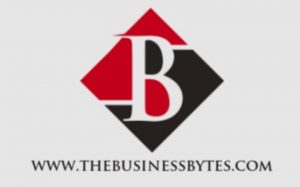
JAYAJIT DASH
“The leader of the past knew how to tell. The leader of the future would know how to ask” – Peter Drucker
LEADERSHIP and organizational development have long regarded feedback as a vital tool for growth and improvement. Performance evaluations are two-way streets. Leaders provide feedback to their subordinates, and their subordinates give feedback to their leaders. However, as the world evolves and demands on organizations increase, the concept of ‘feedforward’ is emerging as a promising substitute for traditional feedback.
The concept of feedforward, coined by renowned leadership coach Marshall Goldsmith, involves providing suggestions and ideas for the future instead of dwelling on the past. It offers a refreshing departure from feedback, often focusing on past mistakes and shortcomings. Here are some compelling reasons why feedforward should replace feedback as the Go-To tool for leaders seeking to foster personal and organizational growth:
Embracing the Power of Possibilities: Through feedforward, individuals are encouraged to envision a positive future for themselves. Doing so, they are redirected from past mistakes towards opportunities and potential achievements. When people shift their perspective, they can focus on what they can do instead of what they have done wrong.
The Shift from ‘Wrong’ to ‘Right’: Instead of dwelling on mistakes, feedforward encourages constructive, solution-oriented discussions rather than proving someone wrong. This is similar to using a magnifying glass to focus on a problem rather than using a microscope to magnify a solution.
The Preference of Successful People: Typically, successful individuals prefer feedforward to feedback because it aligns with their goal-oriented mindset. Rather than judging their past performance, they are open to suggestions for improvement.
Universal Applicability: Feedforward can come from anyone who understands the task at hand. The tool is versatile and accessible because it does not require personal familiarity with the individual.
Less Personal, More Objective: It is common for feedback to feel personal, even when it shouldn’t. By its nature, feedforward focuses on future actions and avoids personal criticism, making it easier for individuals to accept and act on.
Avoiding Reinforcement of Stereotypes: A negative self-fulfilling prophecy can be reinforced by feedback, whereas a positive one can be strengthened by feedforward.
Easier to Give and Receive: Negative feedback is dreaded by most people. Through feedforward, we can discuss improvement constructively and positively without feeling uncomfortable or defensive.
Covers the Same Ground, with Less Embarrassment: Feedforward addresses the same issues as feedback without forcing individuals to relive their past mistakes.
Individuals can prepare for future success by following these specific, positive suggestions:
Faster and More Efficient: As feedforward avoids time-consuming debates and judgments about the quality of ideas, it is often faster and more efficient than feedback.
Applicable to Managers, Peers, and Team Members: Managers, peers, and team members can use feedforward. The feedback does not carry the implied judgment often associated with it.
Promotes Active Listening: As participants don’t have to compose clever replies during feedforward exchanges, they tend to listen more attentively. Active listening enhances communication and mutual understanding.
In a world where change is accelerating, organizations must focus on future potential and opportunities rather than past mistakes. Leadership can foster personal and organizational growth by embracing feedforward.
An organization’s lifeblood is quality communication, and feedforward ensures that the right messages are conveyed and well received in a fun, enjoyable, and effective way. Let’s bid farewell to feedback and usher in a new era of feedforward. Embracing this shift can empower individuals, inspire engagement, and lead to extraordinary business results.
Moreover, Feedforward Coaching adds a robust structure to the concept beyond individual development. This approach shifts the focus from standards to goals, integrates career guidance, incorporates diverse perspectives, and occurs throughout the year rather than annually. In addition to aligning with the needs of the modern workforce, this model allows organizations to continuously maximize the potential of their employees.
Now is the time to embrace feedforward rather than feedback. We must strive to become shepherds of people rather than mere task managers. With Feedforward Coaching, ordinary workers can become engaged workplace superheroes who will deliver remarkable business results. For an organization to succeed and grow, it must foster an environment where people can imagine, create, and embrace limitless possibilities. This is similar to a gardener tending a garden: they need to nurture and care for the plants to help them grow and bloom, and they need to provide them with the right soil and nutrients to help them reach their full potential. If the gardener only focuses on weeding out problems, the garden will never reach its full potential. Similarly, organizations must focus on providing feedforward, rather than feedback, to help their employees reach their full potential.
(The author is a compelling content writer who revels in writing at the intersection of technology and policy ecosystems, has the flair to project emerging technologies in an intelligible light for the benefit of the lay reader. He is currently engaged as a Senior Manager (Corporate Communications) with Bhubaneswar-headquartered IT consulting company CSM Technologies.)
 The Business Bytes
The Business Bytes